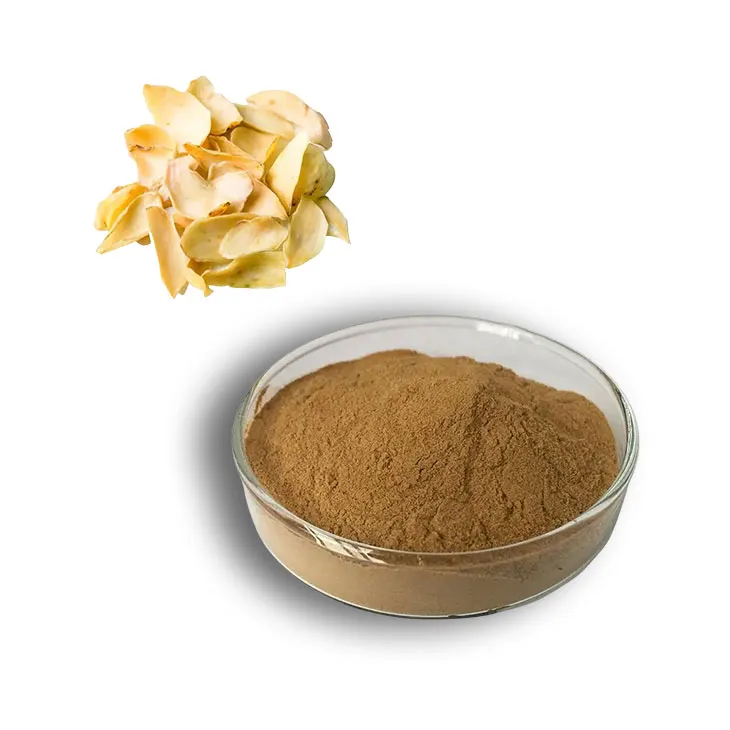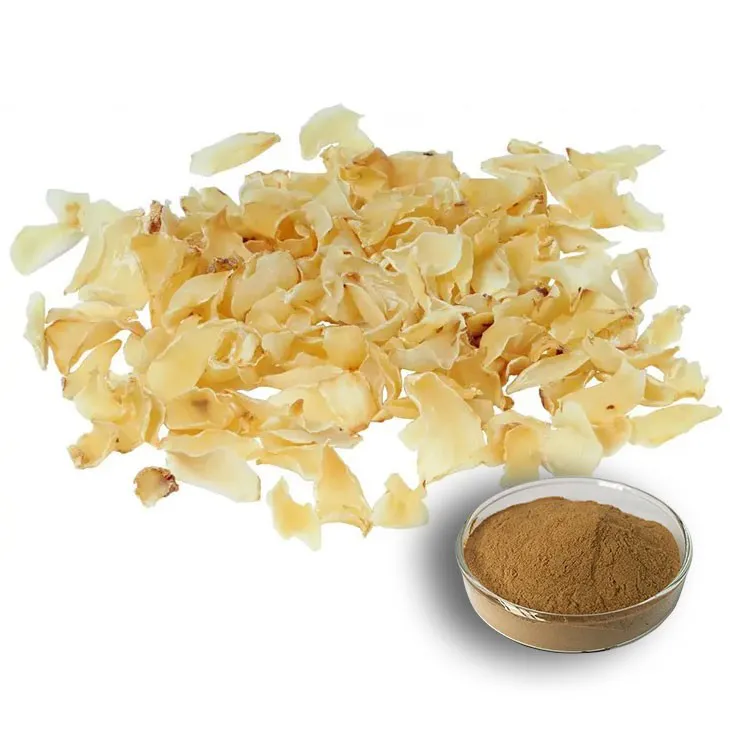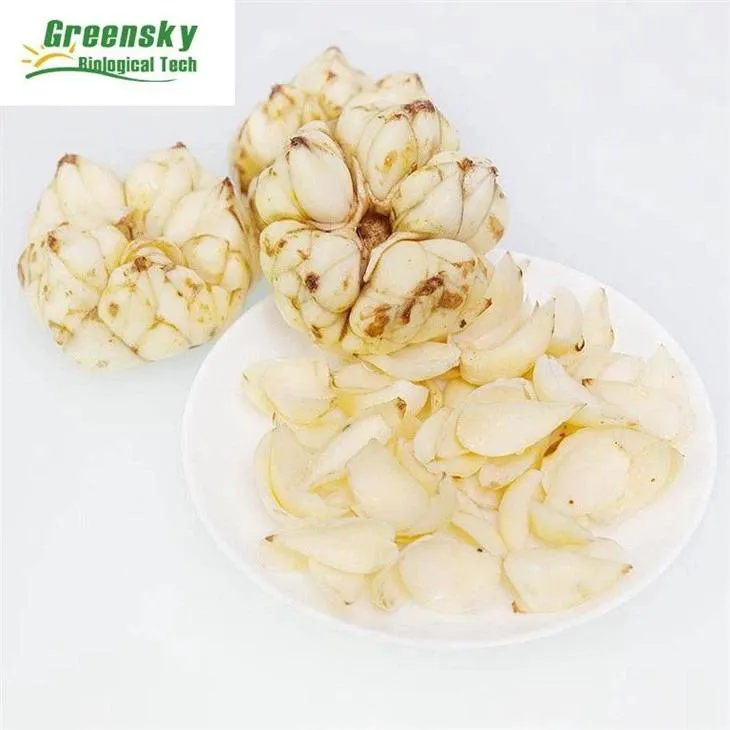- 0086-571-85302990
- sales@greenskybio.com
Optimal Bioavailability of Lily Extract.
2024-11-28

1. Introduction
Lily extract has been widely studied and used in various fields due to its potential health benefits. However, to fully realize its therapeutic and nutritional effects, understanding and optimizing its bioavailability is crucial. Bioavailability refers to the proportion of a substance that enters the circulation and is available at the site of action in the body. This article aims to explore the best bioavailability of Lily extract from multiple aspects.

2. Chemical Composition of Lily extract
2.1. Alkaloids
Lily extract contains alkaloids such as colchicine - like substances. These alkaloids play important roles in the interaction with the human body. They may have anti - inflammatory and analgesic effects. However, their chemical structures can also affect their bioavailability. For example, the complex ring structures of alkaloids may limit their solubility in aqueous solutions, which in turn affects their absorption in the gastrointestinal tract.
2.2. Flavonoids
Flavonoids are another major component in lily extract. They possess antioxidant properties. Compounds like Quercetin and kaempferol are present. These flavonoids can interact with cellular membranes and enzymes in the body. Their glycosidic forms can influence the bioavailability as the glycosidic linkages need to be cleaved before absorption. Moreover, the hydrophobicity of flavonoids also affects their transport across cell membranes.
2.3. Polysaccharides
Lily polysaccharides are large macromolecules. They can have immunomodulatory effects. However, due to their large molecular size, they face challenges in terms of bioavailability. They are less likely to be absorbed intact in the small intestine. Instead, they may be partially degraded by gut microbiota in the large intestine, and the resulting smaller fragments may then be absorbed, but this process is still not fully understood.
3. Interaction of Lily Extract with the Human Body
3.1. Absorption in the Gastrointestinal Tract
The absorption of lily extract in the gastrointestinal (GI) tract is a complex process. As mentioned before, the solubility of different components affects their absorption. For alkaloids, if they are not properly solubilized, they may pass through the GI tract without being absorbed. Flavonoids may form complexes with other substances in the gut, such as dietary fibers, which can either enhance or reduce their absorption. Polysaccharides, being large molecules, are mainly absorbed in the form of smaller fragments after microbial degradation in the large intestine.
3.2. Metabolism in the Body
Once absorbed, lily extract components are metabolized in the liver and other tissues. Alkaloids may be hydroxylated or methylated, which can change their pharmacological properties. Flavonoids are metabolized through phase I and phase II reactions. The metabolites may have different bioactivities compared to the parent compounds. Polysaccharides may be further modified during metabolism, and their immunomodulatory effects may be related to the metabolites formed.
3.3. Distribution and Excretion
After metabolism, the components of lily extract are distributed throughout the body. Some may be concentrated in specific tissues such as the liver, kidneys, or immune - related organs. The excretion of these components mainly occurs through the kidneys in the form of urine or through the feces. The rate of excretion also affects the overall bioavailability as a longer residence time in the body may lead to more interactions and effects.
4. Delivery Systems to Enhance Bioavailability
4.1. Nanoparticle - Based Delivery
Nanoparticles can be designed to encapsulate lily extract components. For example, lipid - based nanoparticles can improve the solubility of hydrophobic components such as alkaloids. The small size of nanoparticles allows them to be easily taken up by cells, enhancing the absorption of lily extract. They can also protect the components from degradation in the GI tract, ensuring that more of the active substances reach the target sites in the body.
4.2. Liposome - Mediated Delivery
Liposomes are spherical vesicles composed of phospholipids. They can encapsulate lily extract components within their aqueous core or lipid bilayer. Liposomes can mimic the cell membrane structure, which facilitates the interaction with cells in the body. This delivery system can improve the bioavailability of lily extract by enhancing the permeability of cell membranes and protecting the components from enzymatic degradation.
4.3. Microemulsion - Based Delivery
Microemulsions are thermodynamically stable isotropic liquid mixtures. They can improve the solubility and dispersion of lily extract components. Microemulsions can also enhance the permeation of components across biological membranes. By reducing the interfacial tension between the oil and water phases, they can increase the contact area between the lily extract and the absorptive surfaces in the body, thereby improving bioavailability.
5. Research and Applications
5.1. Pharmaceutical Applications
In the pharmaceutical field, optimizing the bioavailability of lily extract can lead to more effective drugs. For example, in the treatment of inflammatory diseases, lily extract with enhanced bioavailability can provide better anti - inflammatory effects. It can also be used in the development of new drugs for immune - related disorders, as the immunomodulatory effects of lily polysaccharides can be better harnessed with improved bioavailability.
5.2. Nutraceutical Applications
In the nutraceutical industry, lily extract with high bioavailability can be used in dietary supplements. Consumers can benefit more from the antioxidant, anti - inflammatory, and immunomodulatory properties of lily extract. This can contribute to overall health promotion and disease prevention. For example, in products aimed at improving cardiovascular health or enhancing the immune system, lily extract with optimal bioavailability can play a significant role.6. Conclusion
Understanding the chemical composition of lily extract and its interaction with the human body is fundamental for optimizing its bioavailability. Different delivery systems offer promising ways to enhance the bioavailability of lily extract. The research and applications in both the pharmaceutical and nutraceutical fields can benefit greatly from the improved bioavailability of lily extract. Future research should focus on further exploring the mechanisms of bioavailability and developing more efficient and safe delivery systems for lily extract.
FAQ:
What are the main chemical components in lily extract?
Lily extract contains various chemical components. It typically has polysaccharides, which play important roles in biological activities. Flavonoids are also present, known for their antioxidant properties. Additionally, alkaloids may be part of the lily extract composition, which can have potential effects on physiological functions.
How does lily extract interact with the human body?
The polysaccharides in lily extract may interact with the immune system in the body, potentially enhancing immune responses. Flavonoids can scavenge free radicals, protecting cells from oxidative damage. Alkaloids may interact with receptors or enzymes in the body, influencing biochemical pathways. For example, they might affect neurotransmitter function or metabolic processes.
What are the common delivery systems for lily extract?
One common delivery system is encapsulation. Encapsulating the lily extract can protect it from degradation in the digestive tract and enhance its stability. Another is the use of liposomes. Liposomes can mimic cell membranes and can be designed to target specific cells or tissues in the body, improving the delivery of lily extract. Nanoparticle - based delivery systems are also being explored, which can increase solubility and bioavailability.
How can the bioavailability of lily extract be measured?
Bioavailability of lily extract can be measured through pharmacokinetic studies. This involves analyzing the concentration of the active components in the blood over time after administration. Another method is to study the excretion of the components in urine and feces to determine how much of the lily extract has been absorbed and utilized by the body. In vitro models, such as cell culture studies, can also provide insights into the uptake and availability of the extract components at the cellular level.
What factors can affect the bioavailability of lily extract?
The chemical form of the components in lily extract can affect bioavailability. For example, the solubility of certain compounds can influence how well they are absorbed. The digestive process also plays a role. Conditions in the stomach and intestines, such as pH and the presence of digestive enzymes, can either enhance or reduce the bioavailability. Additionally, the interaction with other substances in the diet or medications can impact the bioavailability of lily extract.
Related literature
- Bioavailability Enhancement of Plant Extracts: The Case of Lily Extract"
- "Chemical Composition and Bioavailability of Lily Extract: A Comprehensive Review"
- "Delivery Systems for Botanical Extracts: Improving Lily Extract Bioavailability"
- ▶ Hesperidin
- ▶ citrus bioflavonoids
- ▶ plant extract
- ▶ lycopene
- ▶ Diosmin
- ▶ Grape seed extract
- ▶ Sea buckthorn Juice Powder
- ▶ Beetroot powder
- ▶ Hops Extract
- ▶ Artichoke Extract
- ▶ Reishi mushroom extract
- ▶ Astaxanthin
- ▶ Green Tea Extract
- ▶ Curcumin Extract
- ▶ Horse Chestnut Extract
- ▶ Other Problems
- ▶ Boswellia Serrata Extract
- ▶ Resveratrol Extract
- ▶ Marigold Extract
- ▶ Grape Leaf Extract
- ▶ blog3
- ▶ blog4
-
High - quality Chasteberry Extract Products.
2024-11-28
-
China's banana juice powder suppliers.
2024-11-28
-
Bulk purchase of cranberry extract.
2024-11-28
-
How to make powder with bayberry extract?
2024-11-28
-
The best peony root extract in nature.
2024-11-28
-
100% Pure Organic Baicalin.
2024-11-28
-
Scutellaria Extract
2024-11-28
-
Reishi mushroom extract
2024-11-28
-
Pomegranate Extract
2024-11-28
-
Bilberry Extract
2024-11-28
-
Lemon Juice Powder
2024-11-28
-
Peppermint Extract Powder
2024-11-28
-
Carrageenan Extract Powder
2024-11-28
-
Honeysuckle Pollen
2024-11-28
-
Red Vine Extract
2024-11-28
-
Boswellia Serrata Extract
2024-11-28





















